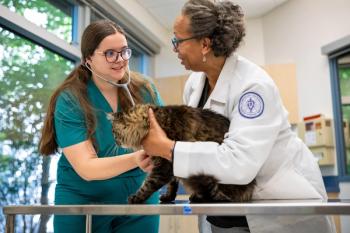
Case 2
When Spot comes in two weeks later for a follow-up liver panel, you find that his ALT activity has returned to normal and his ALP activity is unchanged. He continues to do well at home receiving the tramadol. You and the owner decide to examine Spot again in six months to re-evaluate his liver profile.
REFERENCES
1. Ettinger SJ, Feldman EC, eds. Textbook of veterinary internal medicine. 7th ed. Philadelphia, Pa: Saunders, 2010.
2. Nestor DD, Holan KM, Johnson CA, et al. Serum alkaline phosphatase activity in Scottish Terriers versus dogs of other breeds. J Am Vet Med Assoc 2006;228(2):222-224.
<<
Newsletter
From exam room tips to practice management insights, get trusted veterinary news delivered straight to your inbox—subscribe to dvm360.




